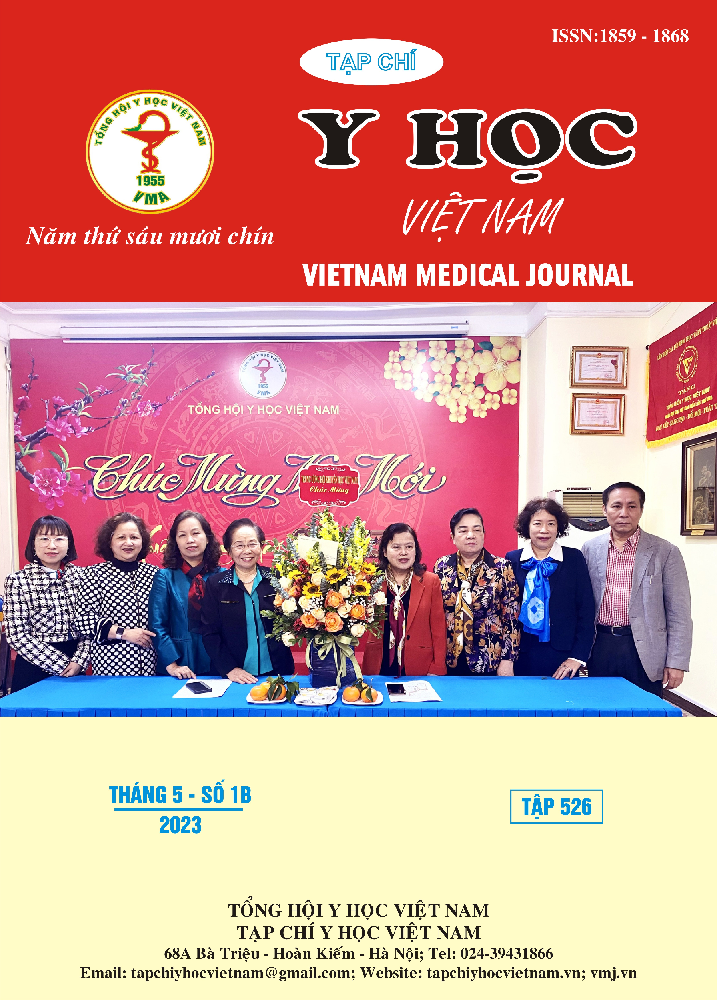NGHIÊN CỨU ĐA HÌNH GEN STAT5B RS6503691 Ở BỆNH NHÂN UNG THƯ BIỂU MÔ TẾ BÀO GAN CÓ HBSAG (+)
Nội dung chính của bài viết
Tóm tắt
Mục tiêu: Xác định tần suất kiểu gen của điểm đa hình gen STAT5b rs6503961 và mối liên quan với nguy cơ ung thư ở bệnh nhân ung thư biểu mô (UTBM) tế bào gan. Đối tượng và phương pháp: Nghiên cứu mô tả cắt ngang trên 118 bệnh nhân UTBM tế bào gan có HBsAg (+), có so sánh với 86 bệnh nhân xơ gan có HBsAg (+) và 195 người khỏe mạnh tại Bệnh viện TWQĐ 108, Bệnh viện Quân y 103 và Bệnh viện Đa khoa thành phố Cần Thơ thời gian từ 7/2017 đến 8/2020. Tiến hành phân tích đa hình gen STAT5b rs6503691 từ mẫu máu ngoại vi của các đối tượng nghiên cứu theo phương pháp PCR-RFLP tại Trung tâm nghiên cứu y dược học Quân sự - Học viện Quân y. Kết quả: Tần xuất kiểu gen CC của điểm đa hình gen STAT5b rs6503691 chiếm tỷ lệ cao nhất ở bệnh nhân UTBM tế bào gan là 49,7%, cao hơn so chỉ số tương ứng ở nhóm xơ gan là 47,7% và người khỏe mạnh là 40,5%; trong khi kiểu gen TT chiếm thấp nhất ở bệnh nhân xơ gan (7,0%), sự khác biệt chưa có ý nghĩa thống kê, p > 0,05. Kết luận: Đa hình gen STAT5b rs6503691 không có mối liên quan đến nguy cơ UTBM tế bào gan có HBsAg (+).
Chi tiết bài viết
Từ khóa
Đa hình gen STAT5B, ung thư biểu mô tế bào gan.
Tài liệu tham khảo
2. Marrero J.A., Kulik L.M., Sirlin C.B. et al. (2018), Diagnosis, Staging, and Management of Hepatocellular Carcinoma: 2018 Practice Guidance by the American Association for the Study of Liver Diseases., Hepatology. 68 (2): 723-750.
3. European Association for the Study of the Liver (2017), EASL 2017 Clinical Practice Guidelines on the management of hepatitis B virus infection. Journal of Hepatology. 67: 370–398.
4. Alqahtani A., Khan Z., Alloghbi A. et al. (2019), Hepatocellular carcinoma: molecular mechanisms and targeted therapies. Medicine, 55(9): 526–547.
5. Thomas S.J., Snowden J.A., Zeidler M.P. et al. (2015), The role of JAK/STAT signaling in the pathogenesis, prognosis and treatment of solid tumours. Br. J. Cancer., 113(3): 365–371.
6. Dong Z., Chen Y., Yang C. et al. (2019). STAT gene family mRNA expression and prognostic value in hepatocellular carcinoma. OncoTargets and Therapy. 12: 7175–7191.
7. Zhao L., Zhang Q., Luan X. et al. (2015). STAT3 and STAT5b polymorphism contributes to breast cancer risk and clinical outcomes. Int J Clin Exp Pathol., 8(2): 2033-2038.
8. Vaclavicek A., Bermejo J.L., Schmutzler R.K. et al. (2007). Polymorphisms in the Janus kinase 2 (JAK)/ signal transducer and activator of transcription (STAT) genes: putative association of the STAT gene region with familial breast cancer. Endocrine-Related Cancer, 14: 267–277.
9. Trifa A.P., Cucuianu A., Popp R.A. et al. (2012). No association between the STAT5b rs6503691 (C>T) SNP and myeloproliferative neoplasms. European Journal of Haematology, 90: 257–258.
10. Bộ Y tế (2012). Hướng dẫn chẩn đoán và điều trị ung thư tế bào gan nguyên phát, Ban hành kèm theo Quyết định số: 5250/QĐ-BYT ngày 28 tháng 12 năm 2012 của Bộ trưởng Bộ Y tế.


